By Gene E. Salecker
In March 1942, the Japanese juggernaut that had steamrolled across the Pacific during the early months of the war landed at Lae village at the southwestern corner of the Huon Peninsula of Papua New Guinea. By March 1943, the Japanese had built the area into a major airbase and anchorage on Huon Gulf.
By July 1943, Australian and American troops under the command of General Douglas MacArthur had stopped the Japanese advance toward Port Moresby on New Guinea’s southern coast and had begun to overpower Japanese strongpoints along the island’s northwestern coast. In late June, American troops had landed at Nassau Bay, 45 miles south of Lae, and after linking up with Australian troops that had been pushing the retreating Japanese westward through the jungle, turned northward toward the small village of Salamaua, about 20 miles south of Lae.
As the American and Australian troops closed in on Salamaua, the Japanese began shifting troops toward the threatened area. This was exactly what General MacArthur wanted. He was hoping to weaken the Japanese garrison at Lae and capture the Markham Valley, 17 miles west, and the Huon Peninsula to the east. Then the Allies would converge on Lae from opposite directions. Eventually, the date for the attack was set for September 4.
MacArthur planned to have a combined Australian and American force of approximately 16,400 men make an amphibious landing 20 miles east of Lae on the south coast of the Huon Peninsula and attack westward. The next day, the U.S. 503rd Parachute Infantry Regiment (PIR), aided by the Australian 2/6th Field Artillery would drop on an abandoned civilian airstrip at Nadzab on the north bank of the Markham River about 17 miles northwest of Lae. Once the airfield was in American hands, the Australian 7th Division would be airlifted onto the captured airfield and attack eastward, becoming the second wing of a pincer movement on Lae.
The attack and seizure of the Markham Valley and the Huon Peninsula included a lot of firsts for the Pacific War. The jump by the 503rd PIR would be the first American combat parachute drop in the Pacific. This would be the first and only time in the Pacific that an entire regiment was dropped in one lift. The combination parachute drop, airlift, and amphibious assault would also be a first in the Pacific.
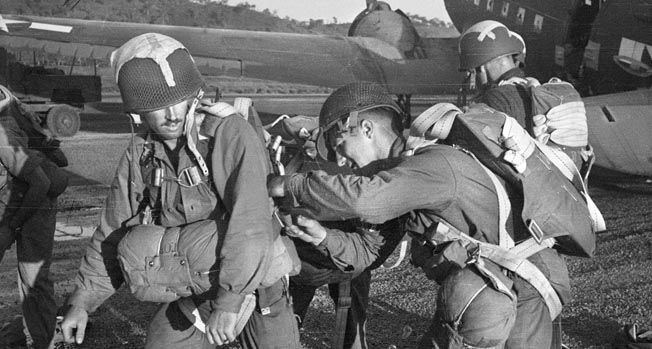
In preparation for the airborne assault, the 503rd PIR, which had been rushed to Australia in November 1942 but had seen no action, was moved to an area 17 miles north of Port Moresby conveniently called 17 Mile. A large 3-D layout of the Nadzab area was constructed inside the tent of Colonel Kenneth H. Kinsler, commander of the paratroopers, and by September 3 all of the officers and troopers were familiar with the area of their drop zone.
Among the information passed along to every trooper was the fact that since Nadzab was an abandoned field, kunai grass, with thin, razor-sharp leaves, had reclaimed the area and might be about four feet high.
Colonel Kinsler wanted his 1st Battalion to jump directly on the airfield. The paratroopers would then link up with a detachment of Australian engineers and native laborers, which would arrive by boat via the Markham River and start the reclamation of the abandoned airstrip.
Kinsler’s 2nd Battalion would be dropped to the north of the airstrip and attack any Japanese within Gabsonkek, a small native village north of the airfield. Finally, the 3rd Battalion would jump to the east of the airfield and move south to the bank of the Markham River.
Later on September 3, four officers and 27 men from the Australian 2/4th Field Artillery arrived at the paratrooper bivouac area. They brought with them two 25-pounder short Mk-1 artillery pieces, which they planned to dismantle and drop with them onto Nadzab. Unfortunately, none of the Australians had ever been given jump training, so they were all given a quick course in how to jump from a moving plane. At the end of the day, the artillerists went up and took their one and only practice jump.
The men of the 503rd PIR were awakened before 3 am on September 5, 1943, and fed breakfast in the dark. They quickly gathered up their parachutes and equipment and were trucked to two different airdromes near Port Moresby. At 8:25, after loading aboard the 82 waiting Douglas C-47 transport planes of the 317th Troop Carrier Group, the aircraft began taking off from the two airdromes.
When all the planes were in the air and assembled, they climbed to 9,000 feet to get over the Owen Stanley Mountains. Once over, the planes dropped back down to 3,500 feet and reformed into three parallel battalion flights. Near 10 am, the jumpmasters opened the doors from the port sides of the C-47s and called for the men to “stand up and hook up.” In 15 minutes the paratroopers would be jumping on Nadzab field.
On one plane, carrying 15 paratroopers from Company C, 1st Battalion, a defective door blew from its hinges and got hung up on the outside of the plane. Fearing that the stuck door would “endanger the life of every man who would have tried to jump,” the decision was made to abort the mission. Fifteen disappointed paratroopers sat back down as their plane returned to Port Moresby.
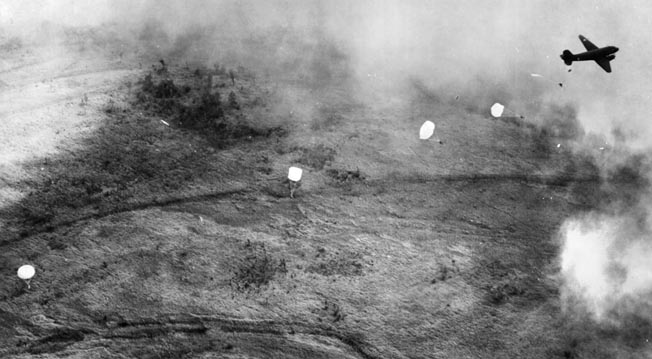
Identifying the Markham River, the C-47 pilots dropped down to about 500 feet. At such a low altitude the weather suddenly became hot and humid. The sudden drop in altitude, the high humidity, the bumpiness of the airplanes due to the humid air, and the high anxiety accompanying this first combat jump caused a number of paratroopers to become airsick and reach for the “honey buckets.” On one flight, one man passed out and slid to the floor of the plane.
Preceding the C-47s, and rushing in at 9:59 am were six squadrons of North American B-25 Mitchell bombers from Lt. Gen. George C. Kenney’s Fifth Air Force, which strafed and bombed the jump areas and surrounding villages. At the Nadzab airstrip, six Douglas A-20 Havoc bombers dropped down low. Their bombs belched a thick column of smoke that suddenly obscured the jungle from the airstrip.
At 10:22 am, Lt. Col. John J. Tolson, the commanding officer of the 3rd Battalion, became the first American paratrooper to make a combat parachute drop in the Pacific War. Tolson’s battalion planes were on the far right side of the formation since his battalion had been given the assignment of securing the area east of the airstrip. However, because the lead pilots got confused and hesitated a few minutes before turning on the green “Go” light, about half of the 3rd Battalion paratroopers landed in the jungle just beyond the drop zone.
Private Hugh H. Reeves, Company G, 3rd Battalion, recalled, “I was in the sixth plane in our group, and when I went out the door I could see nothing but treetops. My chute opened, made one pendulum swing and I felt myself crashing through limbs. All I could do was fold my arms to cover my face, keep my feet together, point my toes down and say a quick prayer that I would not hit a large limb.”
Within seconds hundreds of parachutes were blossoming above the three drop zones. In 41/2minutes 81 transports were empty. A total of 1,565 men were now floating toward the ground while up above, circling inside three individual Boeing B-17 Flying Fortress bombers were General MacArthur, General Kenney, and Brig. Gen. Richard K. Sutherland, MacArthur’s chief of staff.
At the same time, a group of Australian engineers and pioneers was watching from the ground. A week prior, the 2/6th Field Company, Royal Australian Engineers had set out with its heavy equipment on 12 collapsible boats down the wild Watut and Markham Rivers. Despite the hazards, on the morning of September 5, the engineers were on the south bank of the Markham River, opposite the Nadzab jump area, having lost only three boats and one man.
Meanwhile, the Australian 2/2nd Pioneer Battalion had been leading roughly 800 natives overland toward the airdrop site. Widening existing trails and cutting new ones, the Australians and natives forced their way 45 miles over mountains and through swamps and jungles to reach the south bank of the Markham River opposite Nadzab exactly on schedule. Once there, they linked up with the engineers of the 2/6th Field Company and waited as the American parachutes began to fill the New Guinea sky.
As the generals and the Australians watched, the paratroopers began landing in the kunai grass, some of the tallest grass in the world. They had been told to expect grass “maybe two to four feet” high but landed in grass well over their heads.
Once down in the kunai grass the men could not see one another or find any of the dropped supply containers. Trooper Louis G. Aiken, Sr. (Company B), in the 1st Battalion drop zone, remembered as he drew closer to the tall grass that he was supposed to assemble his plane’s cargo bundle. “[S]woosh into the Kunai Grass, up to and over my ass and I couldn’t see nothing much less a door bundle,” he wrote. “Hell, I didn’t know where I was … and frankly by then I didn’t much give a damn where the bundle was. I was suffocating in the tall grass and was hoping to hell the Japs, if there were any, or somebody else, didn’t strike a match.”
Although the men had been dropped over their correct drop zones, the different battalions were having a hard time assembling. While searching for his assembly point, Trooper Aiken ran across a member of a machine-gun crew. “He had his portion of the gun,” Aiken wrote, “and he wondered out loud what he was supposed to do if he encountered the enemy with only a .45 side arm and part of a light machine gun.”
Slowly, the men began to gather in groups of three, four, or five and began cutting their way through the sharp-edged kunai grass, heading toward the surrounding jungle.
On the eastern side of the airstrip, near the boundary of the 1st and 3rd Battalion drop zones, elements of Company C (1st Battalion) and Company G (3rd Battalion) began shooting at one another through the tall kunai grass until battalion headquarters concluded that each company was firing on the other. Colonel Kinsler immediately ordered a cease fire, but not before two privates, both from Company G, were slightly wounded.
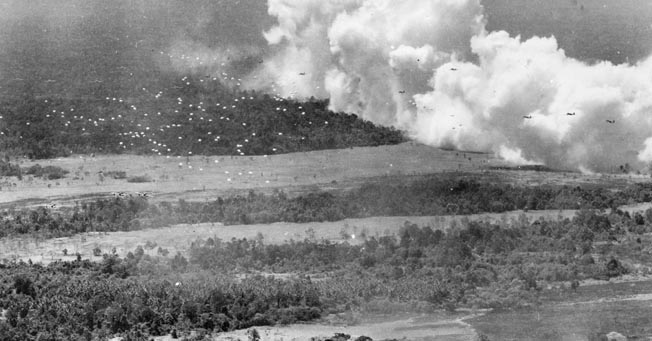
North of the airstrip, a handful of 2nd Battalion men began assembling along the edge of the jungle. They were supposed to move toward Gabsonkek, but nobody knew exactly where they were or where the village was. Finally, around 11:05 am, the men started moving north and eventually found a collection of four or five native huts in a clearing. Too small to be Gabsonkek, the men cautiously moved forward and “captured” the abandoned huts.
Near 11:20 am, an hour after the 503rd PIR was dropped on Nadzab, the four officers and 27 gunners of the Australian 2/4th Field Artillery Regiment and their two 25-pounder howitzers, which had been broken down and bundled in padded parachute containers, were dropped over the Nadzab airstrip.
As soon as the artillerists landed in the tall kunai grass they moved to find and assemble the two guns. Although it would take more than three hours, Sergeant Wally Murnane and his crew were the first to stumble upon all of the parts and get their howitzer back together again, thereby becoming the first airborne artillery in the Pacific.
After determining that there were no enemy troops in the area, the 1st Battalion paratroopers began to ready the airstrip for the Australian 7th Division, which was scheduled to arrive in less than 24 hours. At first the men began hacking at the tall kunai grass with machetes. Soon, however, the toughness of the grass combined with the oppressive heat and humidity sapped each soldier’s strength. To quicken the job, the men set fire to the grass.
Unfortunately, nobody warned the gunners of the Australian 2/4th Field Artillery Regiment. The Australians were still in the middle of the kunai grass looking for their lost gun parts when the field was set on fire. Wrote Australian historian Arthur Burke, “The Americans, desiring to enlarge the airstrip quickly, chose to burn the kunai grass rather than cut it by hand. Fanned by the breeze, this was soon out of control and only the bushmanship of some of the gunners saved their position from being destroyed.”
After a few hours of trying to assemble the 2nd Battalion of the 503rd PIR at the small collection of native huts, the officers decided to move toward the east and locate Gabsonkek, their objective. It was not until 3:30 pm that the tired troopers finally stumbled out of a coconut grove and into the completely abandoned village. By 5 pm, the last of the 2nd Battalion stragglers were dragging themselves into Gabsonkek.
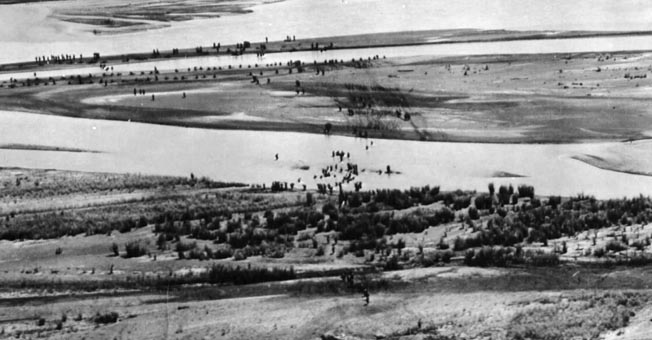
A half hour earlier, after assembling a temporary pontoon bridge out of their nine inflatable boats, the Australian 2/6th Field Engineer Company along with the 2/2nd Pioneer Battalion and their native helpers crossed the Markham River and linked up with the American paratroopers. Immediately the new arrivals took over the work of clearing and extending the Nadzab runway.
Three men had been killed and another 34 had been seriously injured in the jump, most sustaining ankle or leg injuries, and as night began to fall on the Nadzab area, the tired but triumphant paratroopers dug individual foxholes and hunkered down. In spite of their exhaustion, many remained wide awake, certain that the Japanese would take advantage of the darkness to infiltrate their positions.
Second Lieutenant Jerry Riseley, the adjutant of the 2nd Battalion, who was inside the battalion perimeter at Gobsonkek, recalled, “[The village] is on the edge of a coconut grove and every time a coconut would fall, someone would imagine it to be a personal attack on his foxhole and let go with a tommy gun, machine gun or anything he had.”
Throughout the night, chaos reigned supreme inside the 2nd Battalion perimeter. At one point, Companies D and F got into a grenade fight, tossing lethal bombs at one another. Fortunately, no one was seriously hurt. In spite of all the bullets and hand grenades, only one man was slightly wounded.
Inside the 1st Battalion area beside the airfield, the Australian engineers and pioneers, instructing the native levees, continued to work on the airstrip. By 8:30 am on September 6, 1943, the airstrip was ready. The original landing strip had been 1,500 feet long and overgrown with 12-foot-high kunai grass. Working throughout the night, the Australians and natives had cleared the kunai grass and extended the runway out to 3,300 feet.
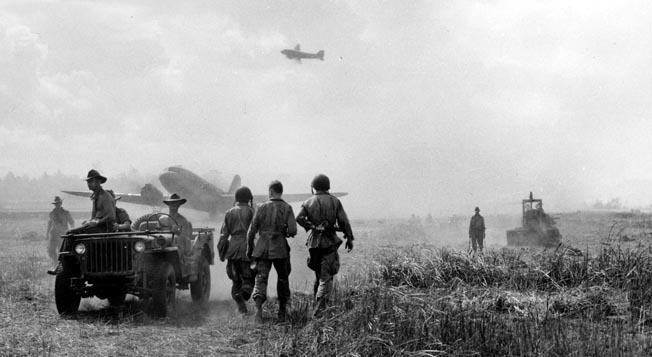
At 10 am, the first C-47s began landing at Nadzab, bringing in two small bulldozers and 12 flamethrowers. In a further attempt to burn away the side brush from the newly extended runway, the 1st Battalion paratroopers and the Australian pioneers employed the flamethrowers. Once again, however, the flames got out of control and raged for two hours before burning themselves out.
For the next two weeks the 503rd PIR remained in the Nadzab/Lae area, earning its baptism of fire. On September 13, a patrol from the 1st Battalion attacked a fortified Japanese position. Sergeant Edward T. Wojewodzic earned a posthumous Distinguished Service Cross when he “led a daring frontal attack which routed the enemy from their position and saved his patrol from heavy casualties.” Sergeant Wojewodzic became the first American paratrooper to die from enemy fire in the Pacific.
A few days later, the entire 3rd Battalion held a static position near Lae across one of the Japanese lines of retreat. Eventually the paratroopers killed approximately 40 Japanese soldiers at the cost of two wounded and four killed, including Staff Sergeant Allie B. Whittington, Company G, who was posthumously awarded a Distinguished Service Cross for saving his platoon from a surprise enemy attack.
Including their losses during the combat drop into Nadzab, the 503rd PIR lost 11 men killed and 45 wounded. Of the 10,000 Japanese soldiers in the area at the beginning of the campaign, more than 4,000 were either killed outright or died of wounds or disease. On September 16, the Australians captured Lae and sent out a force to relieve the 3rd Battalion. By nightfall on September 19, the entire 503rd PIR was back at its base camp near Port Moresby.
Without a doubt, the parachute drop at Nadzab helped hasten the fall of Lae and Salamaua. When the 503rd PIR seized the abandoned airstrip, the Japanese suddenly had a potent force at their own back door. Already facing foes in front of them at Salamaua and to the east of them at Lae, the parachute drop on Nadzab forced the Japanese to realize that they were surrounded.
After the war, a Japanese intelligence officer with the 51st Division stated, “We were retreating from the Salamaua area … when Allied paratroopers landed at Nadzab, which was one place where we thought the enemy would never attack. The remaining elements of our 51st Division were virtually cut in half by this surprise pincer movement.”
The amphibious and airborne moves against Lae had been a complete success. Wrote historian James P. Lowe, “It was a brilliant employment of all available sources of firepower and maneuver. The coordination of the feint against Salamaua, the amphibious assault east of Lae with the airborne drop at Nadzab were excellent examples of joint planning and operations.”
Author Gene E. Salecker is a retired university police office who teaches eighth grade social studies in Bensenville, Illinois. He is the author of four books, including Blossoming Silk Against the Rising Sun: US and Japanese Paratroopers in the Pacific in World War II. He resides in River Grove, Illinois.
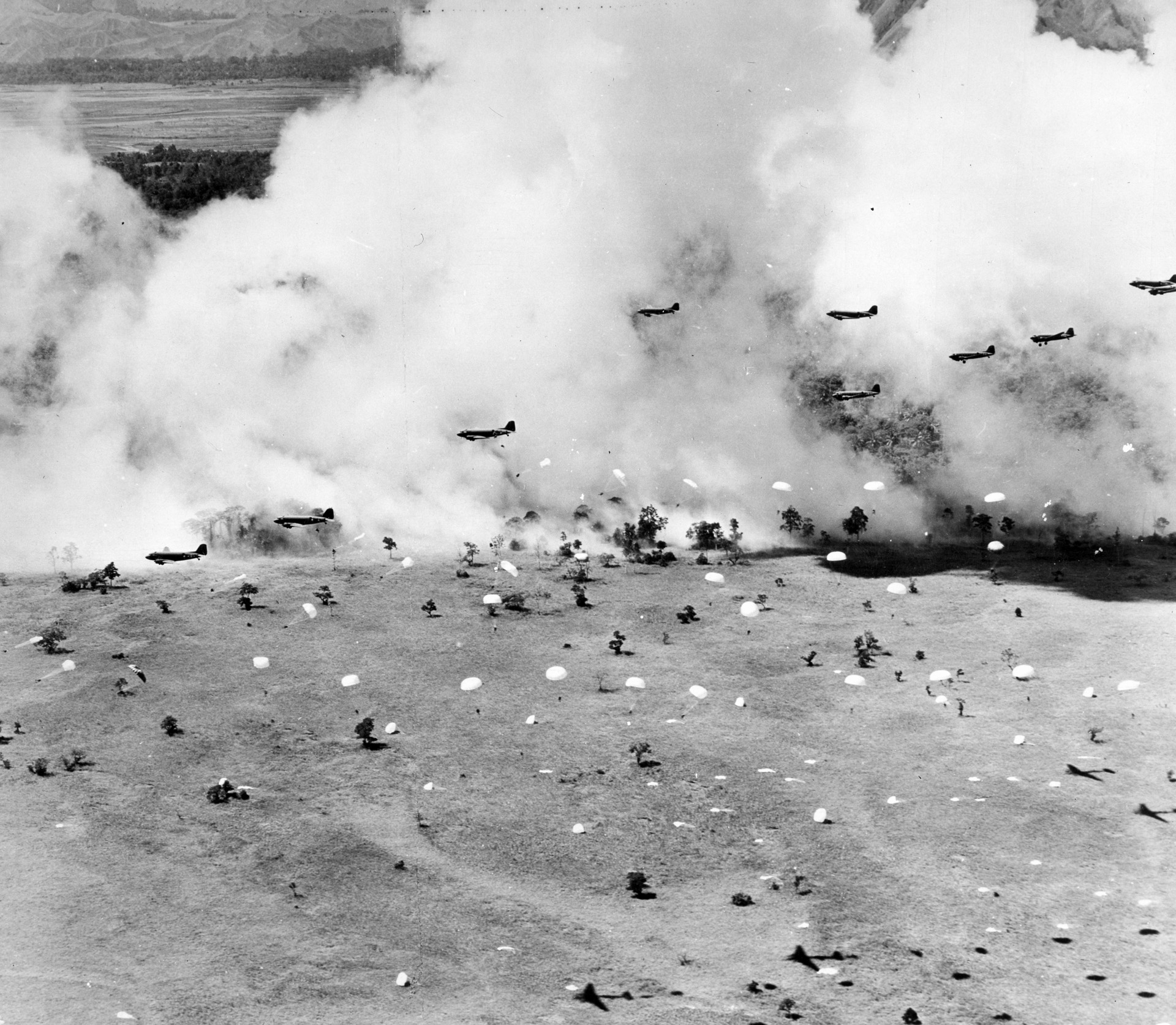
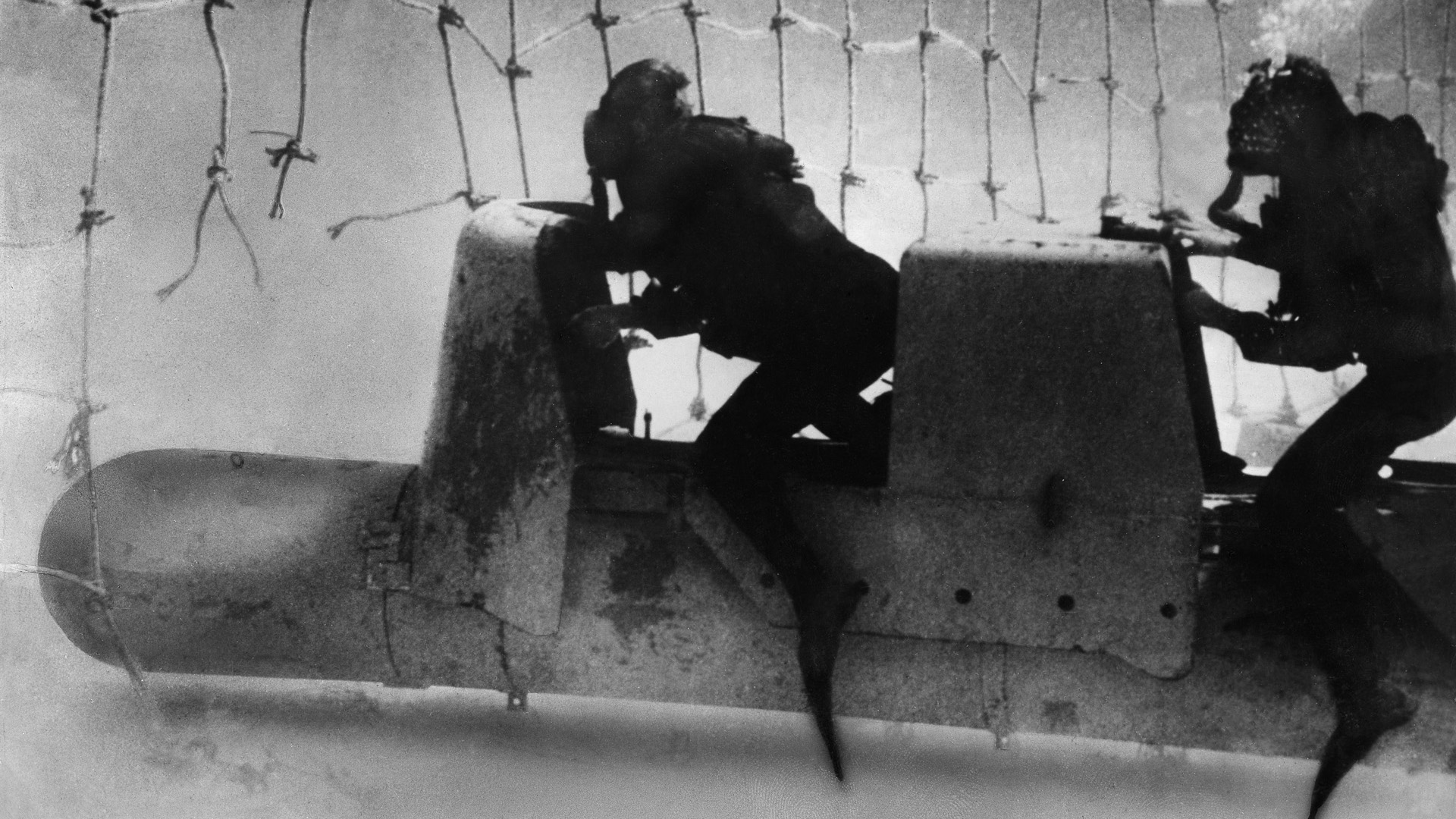
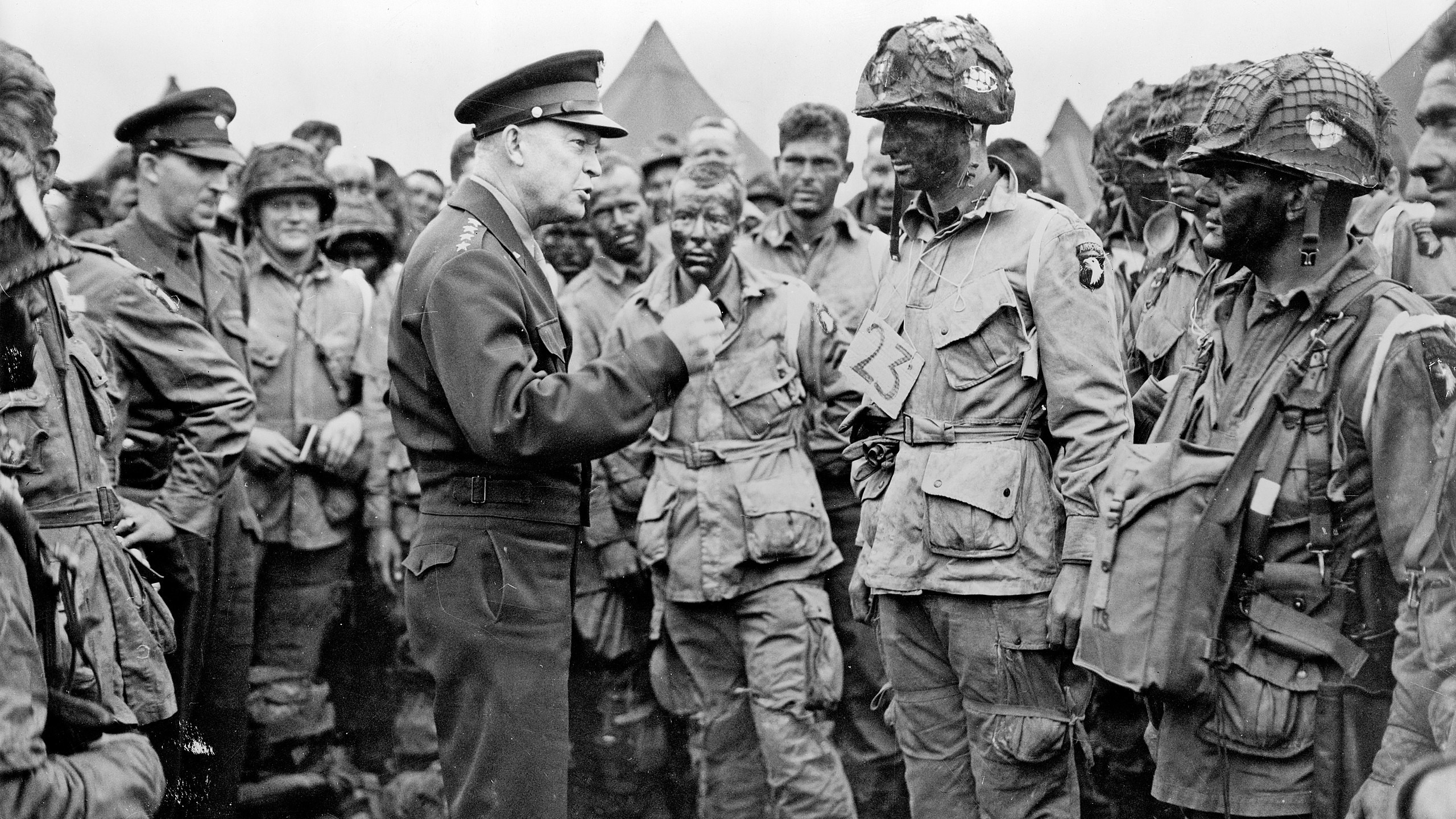
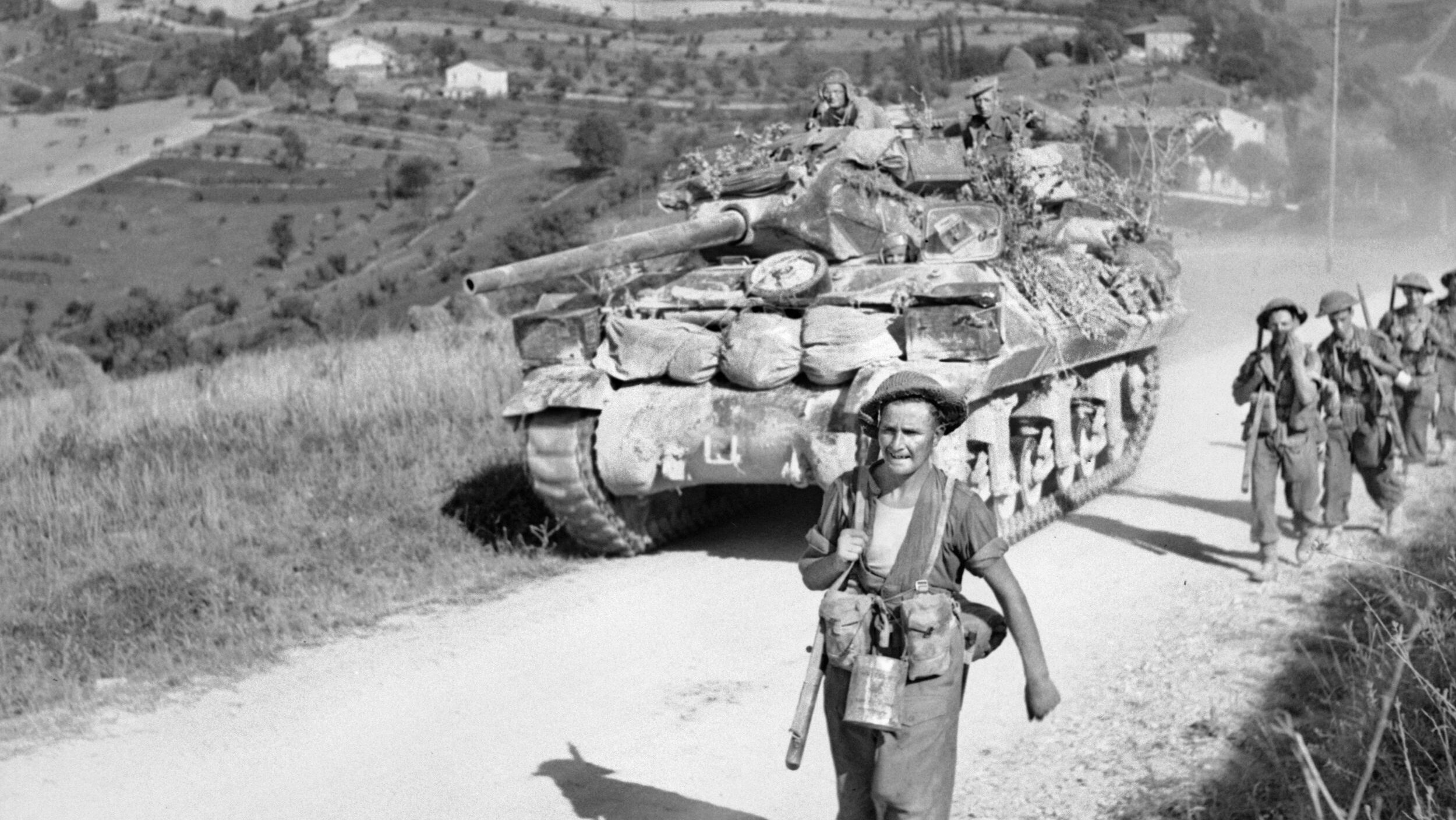
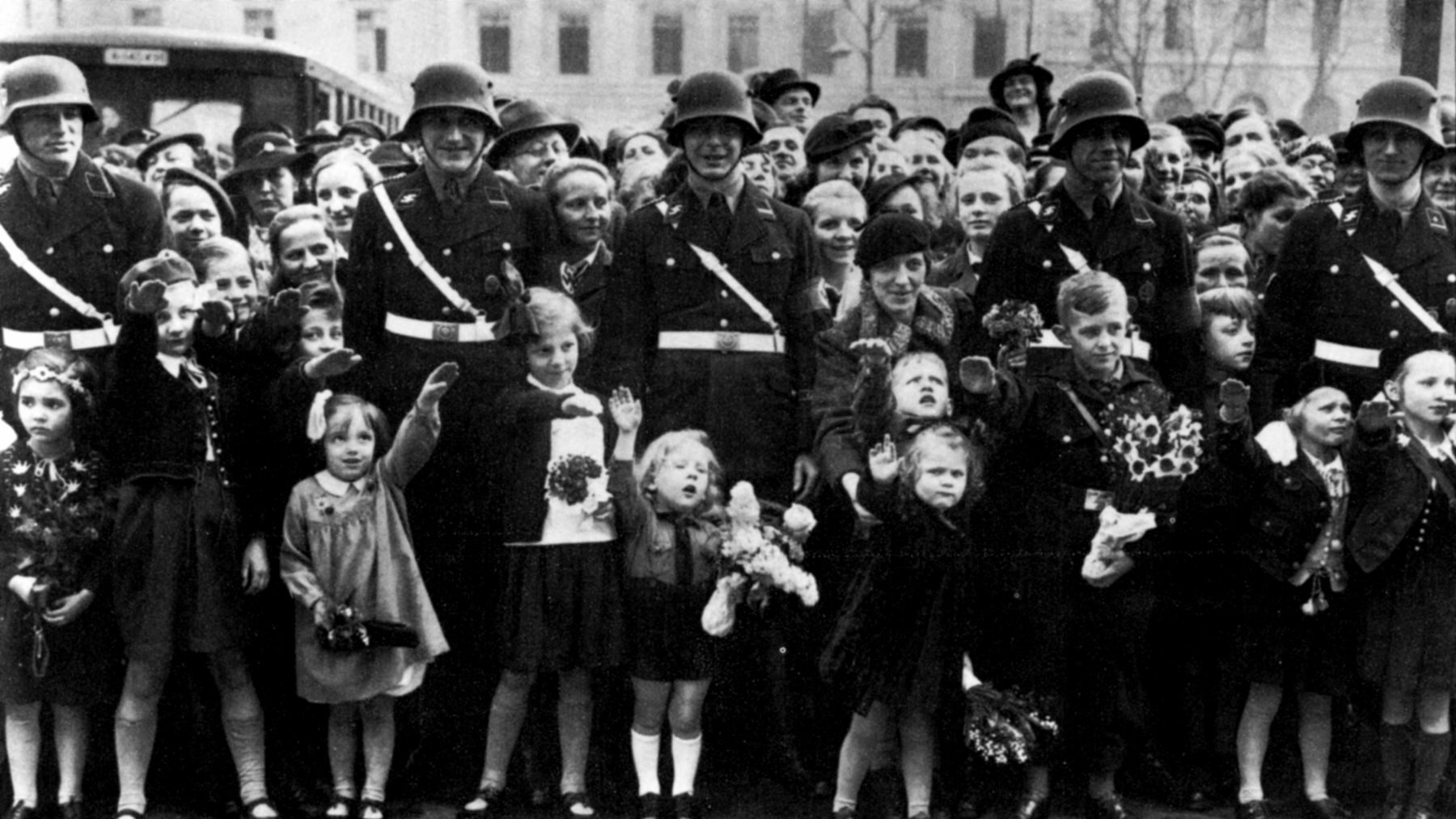
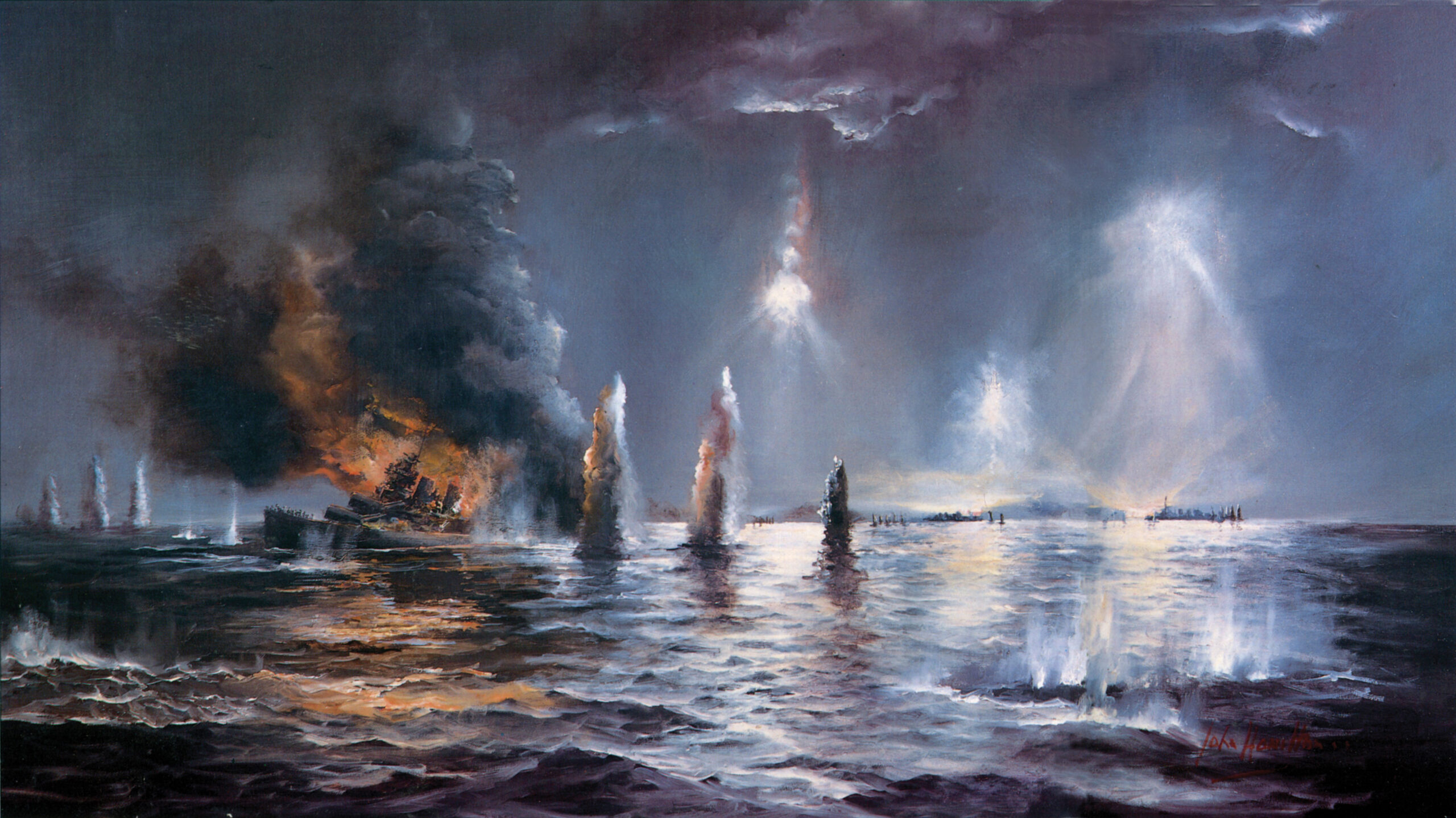
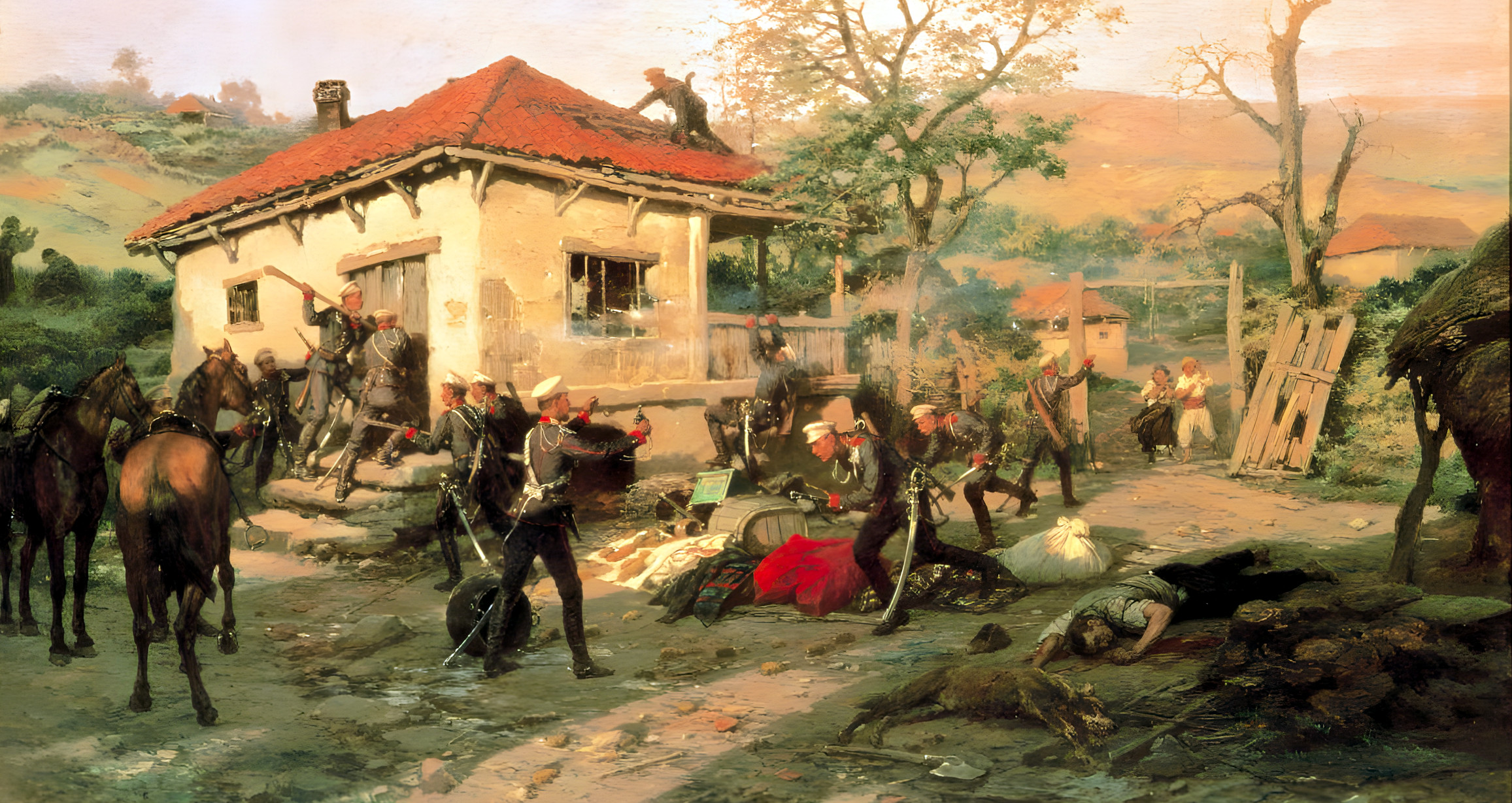
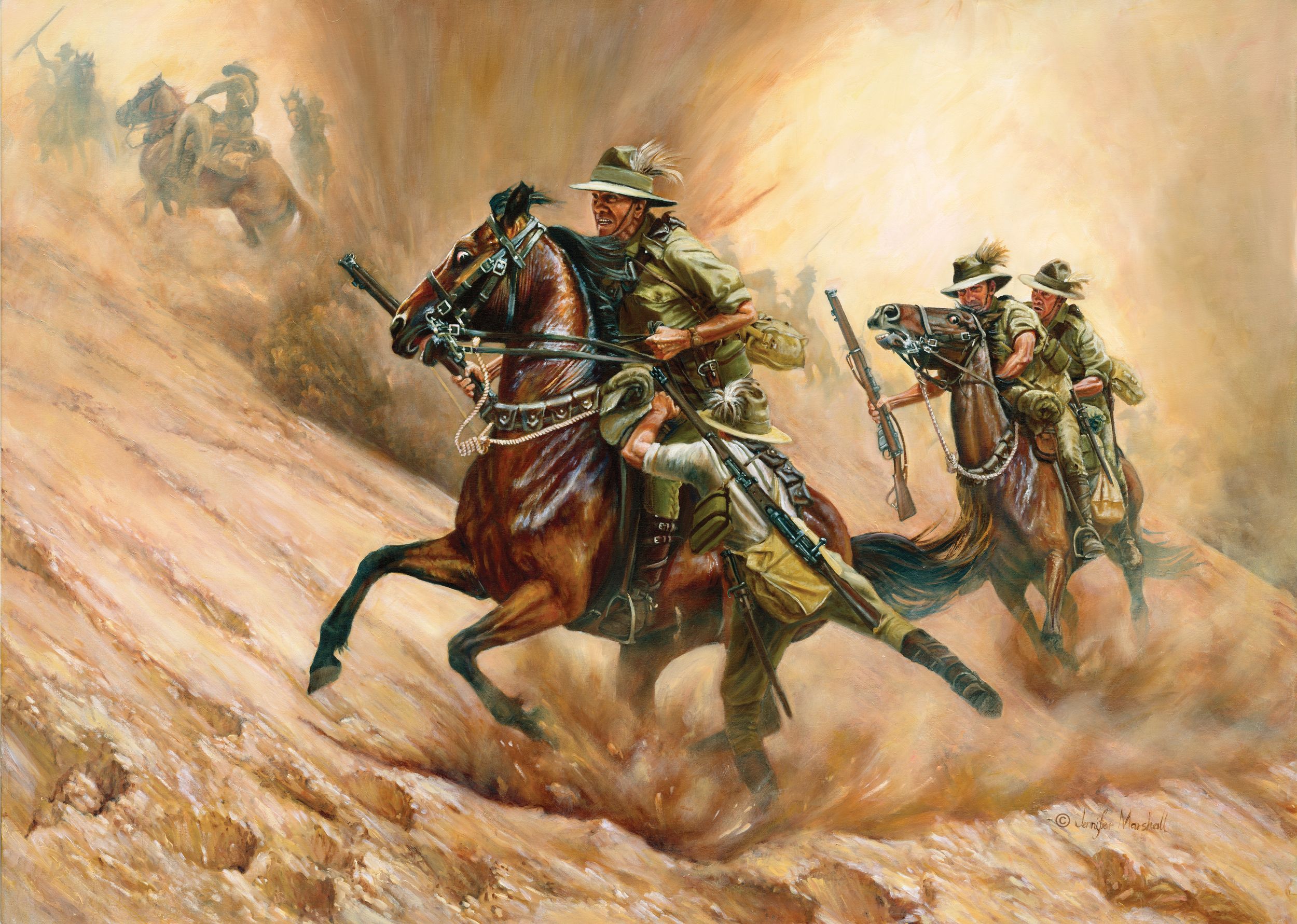
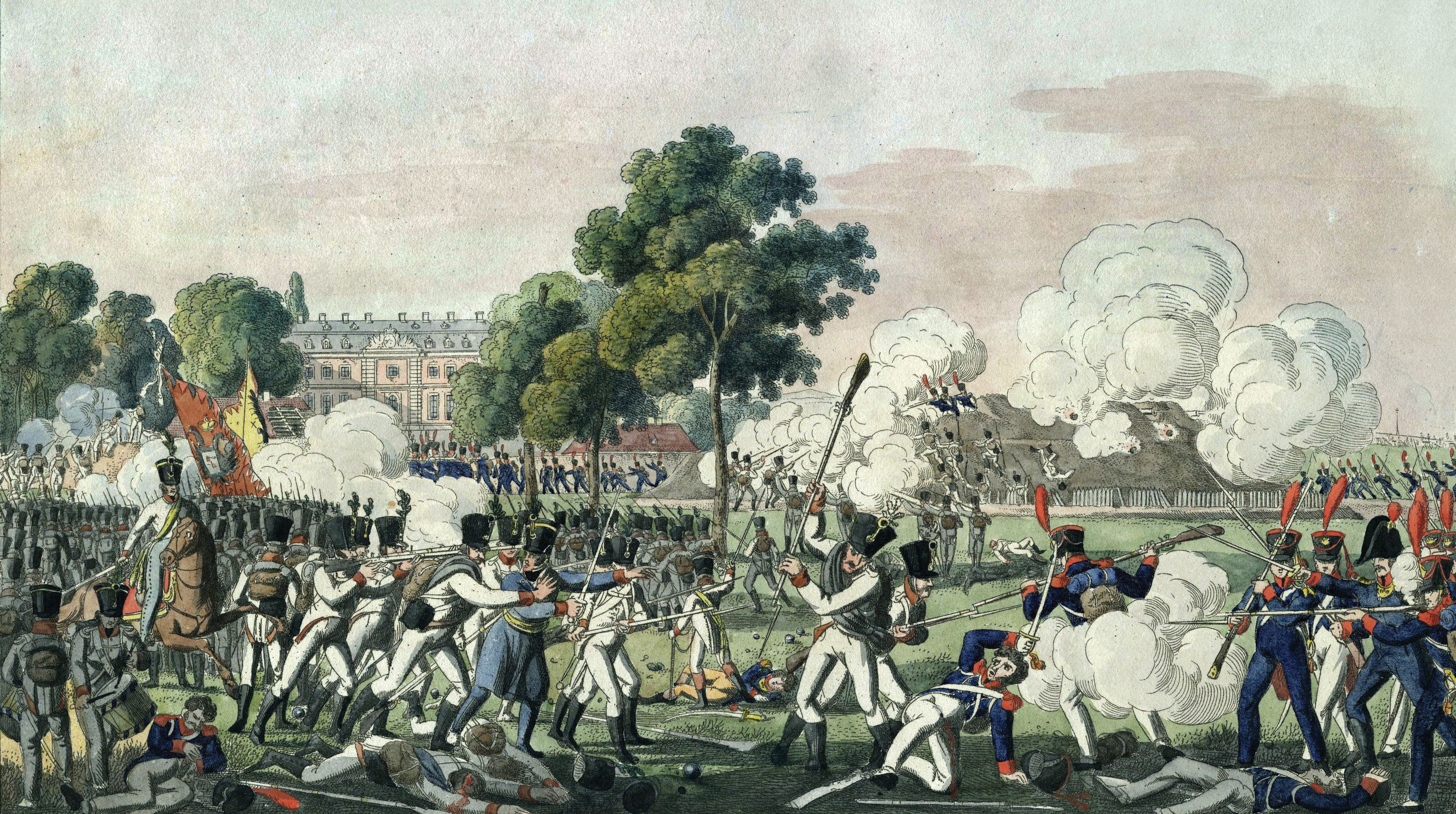
Join The Conversation
Comments
View All Comments